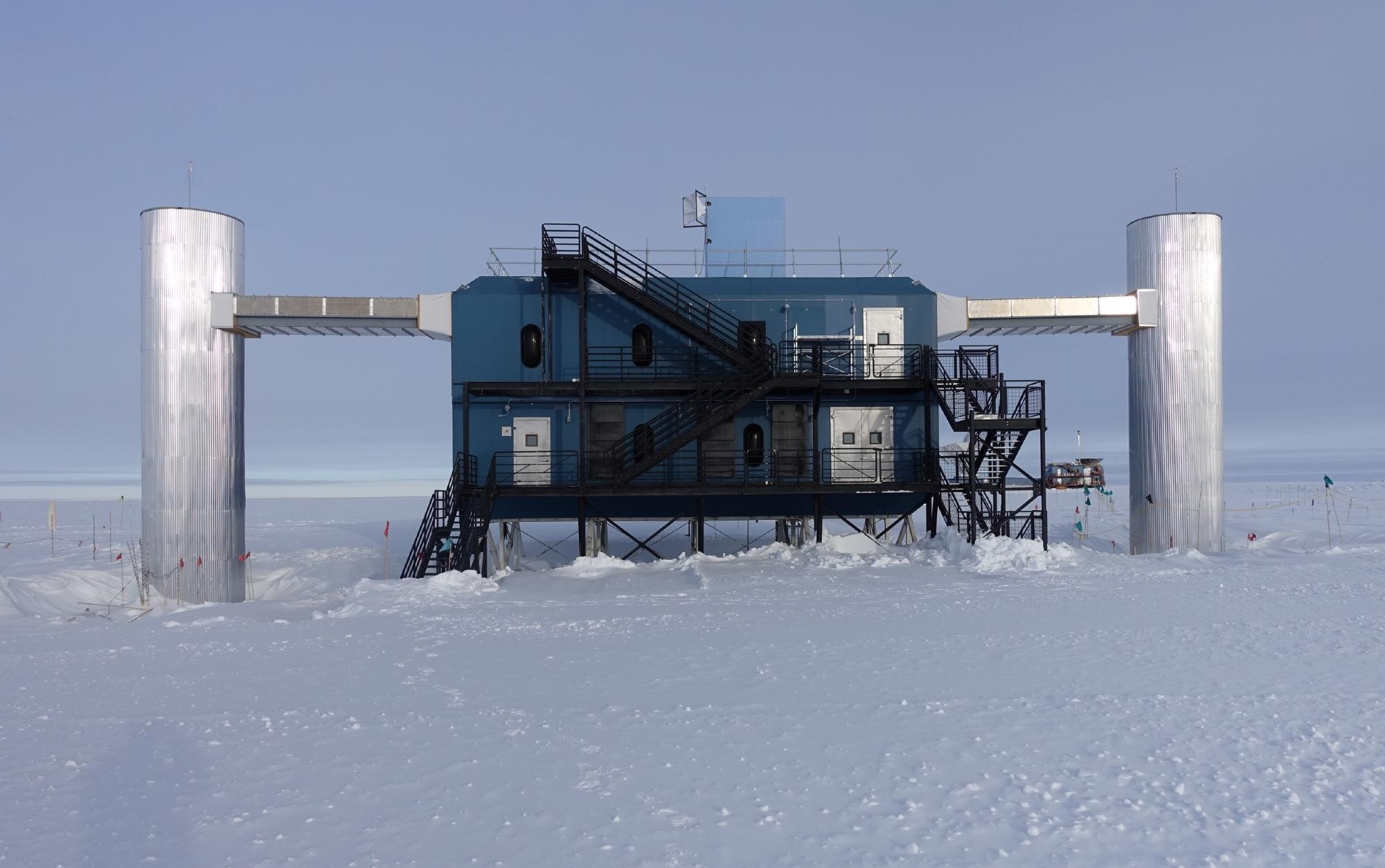Mar 11 2021
On December 6th, 2016, a high energy particle charged toward the planet Earth from outer space at almost the speed of light.
 The IceCube Laboratory at the South Pole. This building holds the computer servers that collect data from IceCube’s sensors under the ice. Image Credit: John Hardin, IceCube/National Science Foundation.
The IceCube Laboratory at the South Pole. This building holds the computer servers that collect data from IceCube’s sensors under the ice. Image Credit: John Hardin, IceCube/National Science Foundation.
This particle—an electron antineutrino—crashed into an electron deep within the ice sheet at the South Pole. And this impact generated a particle that rapidly disintegrated into a cascade of secondary particles, activating the sensors of the IceCube Neutrino Observatory. The observatory is a large telescope concealed in the Antarctic glacier.
Glashow resonance event—a phenomenon estimated by Nobel laureate physicist Sheldon Glashow early in 1960—had been observed by the IceCube telescope. Using this detection, researchers have offered another evidence of the Standard Model of particle physics.
It further revealed the potential of the IceCube telescope, which identifies almost massless particles, known as neutrinos, by using scores of sensors integrated into the Antarctic ice sheet, to do fundamental physics.
The study results were published in the Nature journal on March 10th, 2021.
This resonance was initially proposed by Glashow in 1960 when he was working as a postdoctoral researcher at what is now the Niels Bohr Institute based in Copenhagen, Denmark.
At this institute, Glashow had penned an article, in which he estimated that an antineutrino—the antimatter twin of a neutrino—may interact with an electron to create a yet-to-be-discovered particle via a process called resonance. The crucial part was that the antineutrino should have accurate energy to generate this resonance.
When scientists ultimately discovered the W-minus boson—that is, the proposed particle—back in 1983, it turned out to be relatively heavier than what Glashow and his collaborators had anticipated in 1960.
The Glashow resonance would need a neutrino that has an energy of 6.3 petaelectronvolts, which is nearly 1,000 times more energetic than the one produced by CERN’s Large Hadron Collider.
In fact, no man-made particle accelerator on the planet Earth, either planned or current, can produce a neutrino with that amount of energy.
However, the massive energies of giant black holes at the cores of galaxies and other similar extreme cosmic events can produce particles with energies that are impossible to produce on Earth.
A phenomenon like this was probably responsible for the antineutrino that reached the IceCube Neutrino Observatory back in 2016, crashing into Earth with an energy of 6.3 PeV—exactly as predicted by Glashow’s theory.
When Glashow was a postdoc at Niels Bohr, he could never have imagined that his unconventional proposal for producing the W-minus boson would be realized by an antineutrino from a faraway galaxy crashing into Antarctic ice.
Francis Halzen, Professor of Physics, University of Wisconsin–Madison
Professor Halzen is also the principal investigator of IceCube. The University of Wisconsin–Madison is the headquarters of IceCube maintenance and operations.
Since the IceCube Neutrino observatory swung into full operation in May 2011, it has identified an unlimited number of high energy astrophysical neutrinos and has created several important results in the field of particle astrophysics, such as the detection of an astrophysical neutrino flux back in 2013 and the initial detection of a source of astrophysical neutrinos in 2018.
The Glashow resonance event is significant due to its very high energy.
This event is only the third one to be detected by the IceCube telescope with more than 5 PeV energy. The outcome was a joint effort realized by a group of three researchers: Lu Lu from Chiba University in Japan, currently at the University of Wisconsin–Madison, Tianlu Yuan from the University of Wisconsin–Madison and Christian Haack from RWTH Aachen University, currently at TU Munich.
The detection of the Glashow resonance is the first individual neutrino demonstrated to be of astrophysical origin. It also shows the exclusive contributions of IceCube toward multimessenger astrophysics, which makes use of particles, light and gravitational waves to explore the cosmos.
The result also paves the way to a new chapter of neutrino astronomy, since it has started to separate neutrinos from antineutrinos.
“Previous measurements have not been sensitive to the difference between neutrinos and antineutrinos, so this result is the first direct measurement of an antineutrino component of the astrophysical neutrino flux,” stated Lu, one of the main analyzers of this article.
There are a number of properties of the astrophysical neutrinos’ sources that we cannot measure, like the physical size of the accelerator and the magnetic field strength in the acceleration region. If we can determine the neutrino-to-antineutrino ratio, we can directly investigate these properties.
Tianlu Yuan, Main Analyzer and Assistant Scientist, Wisconsin IceCube Particle Astrophysics Center
The outcome also underscores the value of international association. IceCube is operated by more than 400 engineers, scientists, and personnel from 53 institutions in 12 nations, collectively called the IceCube Collaboration. The main analyzers in this article worked jointly across Europe, North America and Asia.
To validate the detection and make a conclusive measurement of the neutrino-to-antineutrino ratio, the IceCube Collaboration intends to see more Glashow resonance events. A suggested expansion of IceCube-Gen2—the IceCube detector—would allow the researchers to make these measurements in a statistically important manner.
The association has declared an upgrade of the IceCube detector that will be applied across the next few years, the initial step toward IceCube-Gen2.
Glashow, who is currently an emeritus professor of physics at Boston University, reinforces the requirement for additional detections of these eponymous resonance events.
To be absolutely sure, we should see another such event at the very same energy as the one that was seen. So far there’s one, and someday there will be more.
Sheldon Glashow, Emeritus Professor of Physics, Boston University
The study was partly funded by the National Science Foundation (grants opp-1600823 and phy-191360).